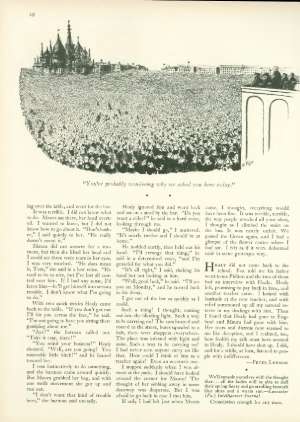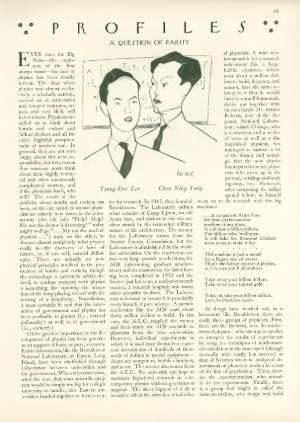The New Yorker, May 12, 1962 P. 49
PROFILE of two theoretical physicists, Chen Ning Yang and Tsung-Dao Lee, who in 1957, were awarded the Nobel Prize in physics for "their penetrating research into the laws of parity, which led to major discoveries concerning the elementary particles." Yang was then 35, and Lee 31, which puts them among the youngest Nobel laureates; they are also the only Chinese who have so far won the prize. The award was the climax of the most exciting year in postwar physics. This is an account of their joint achievement which is a very great advance in pure physics, although one, which, as far as anybody can tell now, has no technological applications or implications. In 1945 both men were students at the Southwest Associated University in Kunming, a city in pre-Communist China & within a few months both came to the U.S. on fellowships. In 1946 they met at the Univ. of Chicago. They subsequently worked at various other institutions. In 1956 Yang was at Brookhaven National Laboratory at Upton, L.I. and Lee was at Columbia They visited each other often, and worked on a mystery known as "the theta-tau puzzle" concerning elementary particles. They questioned the principle of the conservation of parity in weak interactions, and wrote a paper called "Question of Parity Conservation in Weak Interactions." To prove their theory, laboratory experiments had to be conducted. This was done by a group representing Columbia University-National Bureau of Standards, & another group at the Univ. of Chicago. The contention of Lee & Yang was upheld by the experiments. Public announcement of the findings came in Jan., 1957. Today both physicists are at Princeton & collaboration is easier.

